Last week RPData reported that their measure of ‘Stock on Market’ was continuing to see upwards pressure:
The number of newly advertised properties for sale increased again last week, the sixth consecutive week they have done so. Although new listings continue to climb to higher levels, the number of homes being added to the market remain at lower levels than the same period last year (-8.3% lower nationally and -14.0% lower in capital cities). RP Data is currently tracking 307,982 properties for sale across the country and 147,000 properties across the capital cities. Capital city markets currently account for just 47.7% of all listings nationally despite being home to more than 60% of the population. Throughout Australia, total listings are currently 25.6% higher than they were at the same time last year and 20.8% higher across the capital cities.
The worrying sign for the marketplace is that the total number of properties advertised for sale continues to rise and they are currently 7.5% higher than the 12 month average nationally and 5.5% higher across the combined capitals. The large number of properties available for sale will continue to be one of the primary barriers to capital growth until we see some this stock absorbed by the market.
Given those words, I was on the look out for the latest numbers from SQM research to verify that stock on market was indeed, once again, rising. Here are the new February charts, remembering blue is houses, purple is units.
At a national level there was a slight fall in stock:
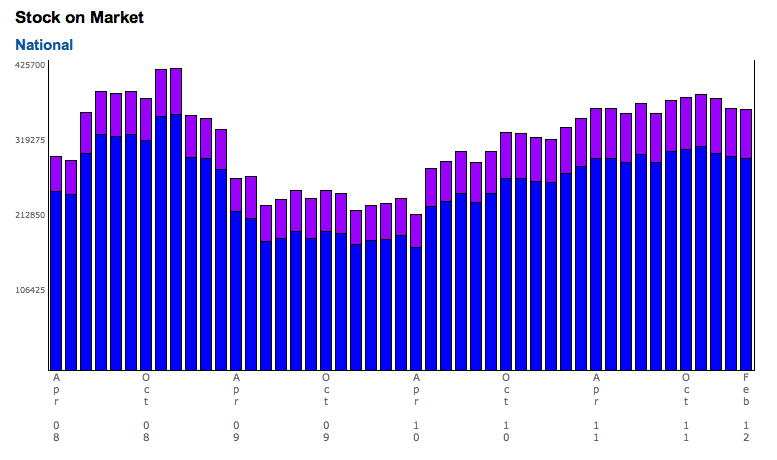
Melbourne on the other hand has reversed course and is headed up again:
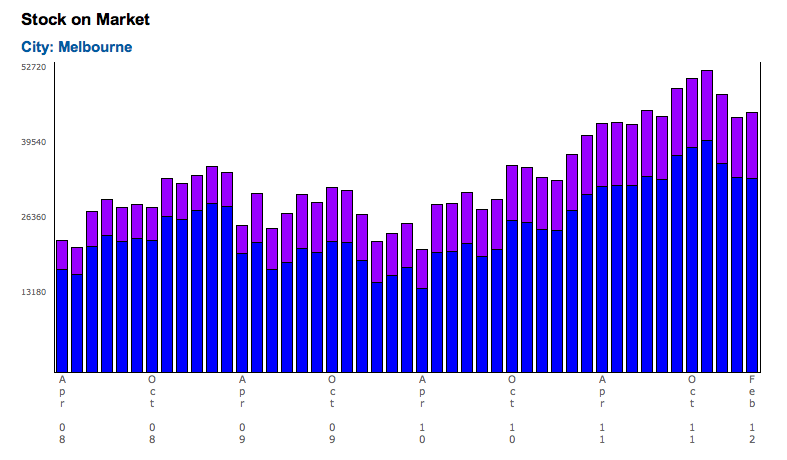
As has Sydney:
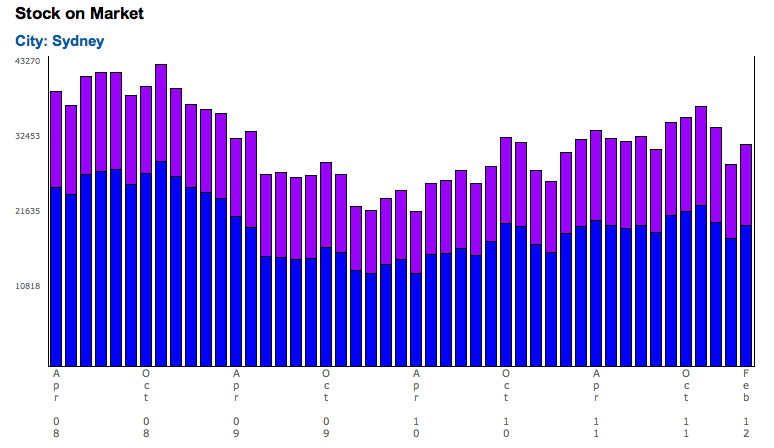
And Canberra:
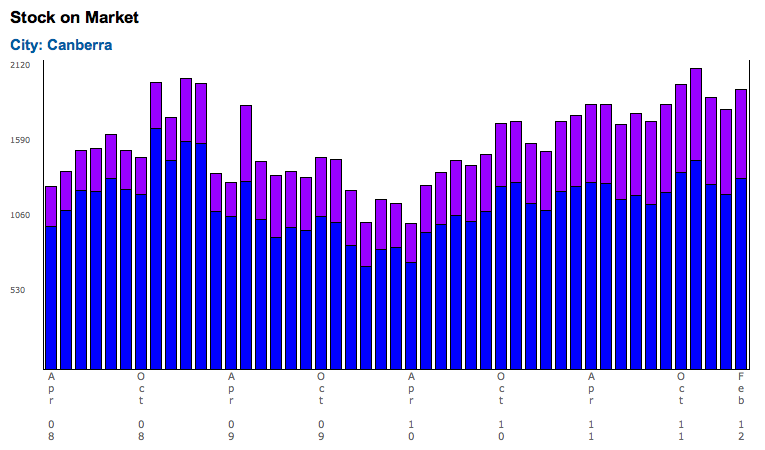
Brisbane, however, continues on its downward trend, albeit at a slower rate:
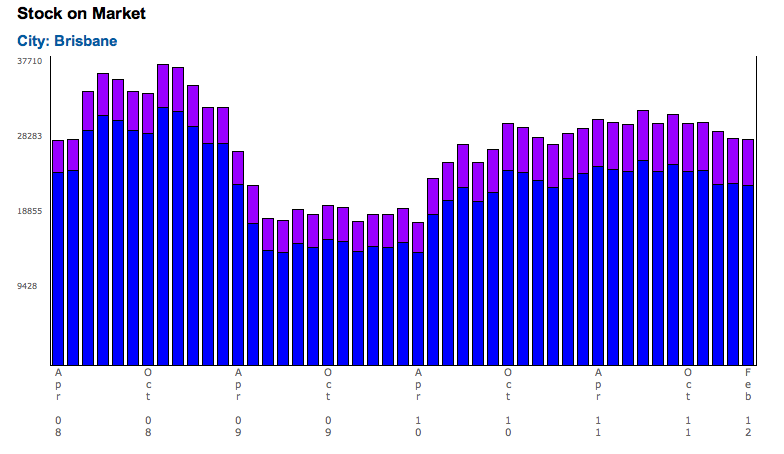
As does Perth:
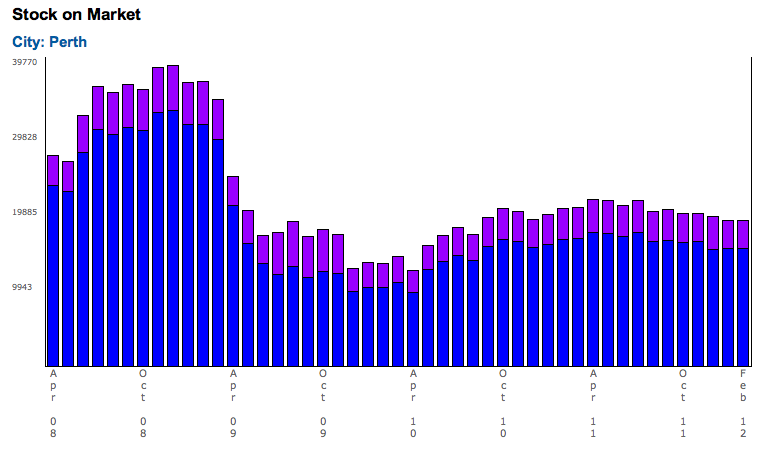
With Adelaide falling more strongly:
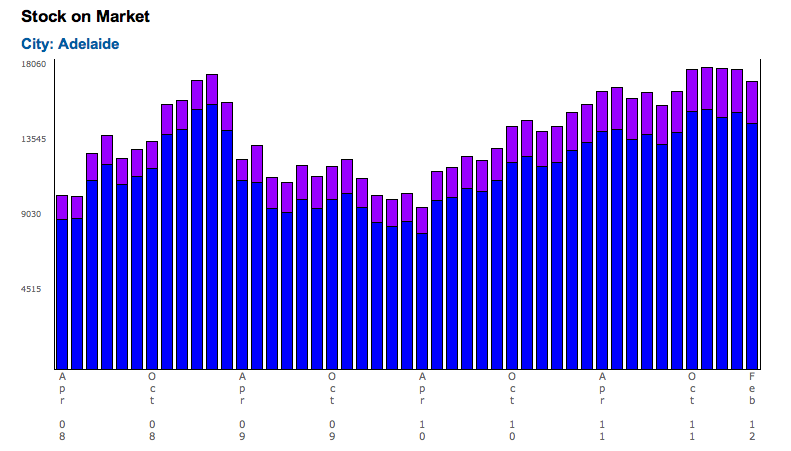
As the market fires back up out of its summer slumber, we are likely to see return of properties to the market. Although RPData are seeing a marked rise in property for sale, at this stage SQM research only appear to be seeing these trends present in 3 of the major centres. However, as can be seen from the national chart, SQM research does appear to have a larger dataset so it is possible that SQM is tracking areas which are outperforming. Hopefully we get some additional details from SQM research in their next newsletter as the rates of change of new stock over February and the likely direction of the market.
Certainly, as RPData alluded to, the reversal of the downward trend in Sydney, Canberra and Melbourne does not fair well for capital growth in those areas.